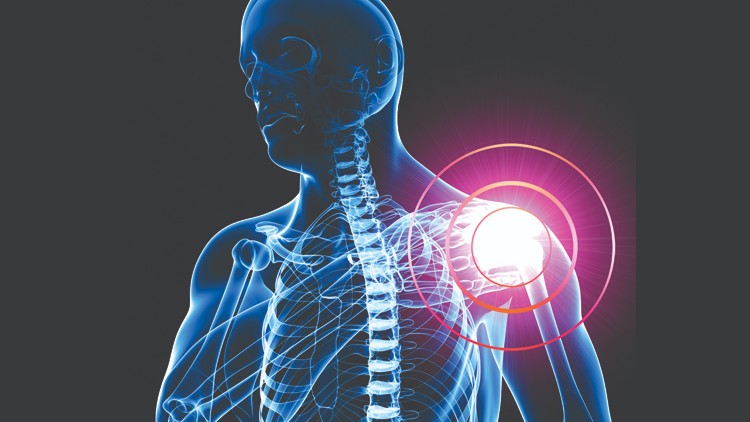How To Injury-Proof Your Shoulder
It’s one of the most vulnerable joints – and you put pressure on it almost every time you lift weights. Here's how to protect it

Your shoulders transmit a vast amount of power through a massive range of movement, as well as stabilising the arm when it’s bearing weight. This ball and socket joint is reliant on a number of muscles, especially the rotator cuffs, which need to be strong and well co-ordinated for optimal performance. Here’s how to dodge the most common problems.
1. Impingement
‘When the structures in the joint get compressed, irritated and inflamed this causes pain around the top and front of the shoulder, particularly when you raise your arm overhead,’ says physio Lucy Macdonald. ‘This is common during swimming and racquet sports or when lifting weights above shoulder height.’
Prevent it: ‘When doing lifting, pushing or pulling exercises, retract your shoulder blades. This encourages good posture and keeps your shoulder stabilisers strong. Also, when swimming, don’t overreach or excessively rotate your shoulder.’
2. Rotator cuff tear
‘When this happens you feel sudden pain in your shoulder, accompanied by weakness lifting the arm. The rotator cuff muscles help to hold the ball in the socket of the shoulder and if they’re overloaded, they’ll tear.’
Prevent it: ‘Increase weights gradually – avoid putting excess power or weight through your shoulder suddenly, in an uncontrolled way or through a greater range than you’re used to.’ Also, do face pulls with a light weight.
3. Dislocation
‘The shoulder has the greatest range of motion of any joint, but this makes it vulnerable to dislocation, which occurs when the ball at the top of the humerus (upper arm bone) comes out of the socket. It’s most common in sports such as rugby, boxing and skiing in which the arm is pulled suddenly, often when it’s outstretched.’
Prevent it: ‘Ensure your rotator cuff muscles are strong with supine shoulder rotations. Lie with your arms perpendicular to your body and bent 90˚ at the elbow, your hands pointing up with your palms facing your feet. Keep your shoulder blades flat on the floor. Slowly move your hands forward and back, touching the floor each time. Do three sets of ten, starting with a light weight and building up gradually.’
Get the Coach Newsletter
Sign up for workout ideas, training advice, reviews of the latest gear and more.
4. Shoulder blade pain
‘Pain from nerves in the spine is transmitted to the shoulder blades, along the upper trapezius muscle. You may also feel pins and needles or numbness in your arms and pain at the end of your range of shoulder movement and when turning your head.’
Prevent it: ‘Posture has a significant effect on the joints and discs in your spine. Keep your chin slightly tucked in and the back of your neck elongated when training and use a foam roller on your upper back daily.’
Between 2014 and 2015, Andre Jackson was the web editor of Men’s Fitness UK, which predated and then shared a website with Coach. A love for climbing ropes and boarding slopes, he doesn’t have the most traditional of workout plans but he’s obsessed with finding out how much protein he can get from everything. His favorite gym move is double wave battle ropes, his favorite sports are football and snowboarding, and his personal best is conquering a V6 bouldering climbing wall.
